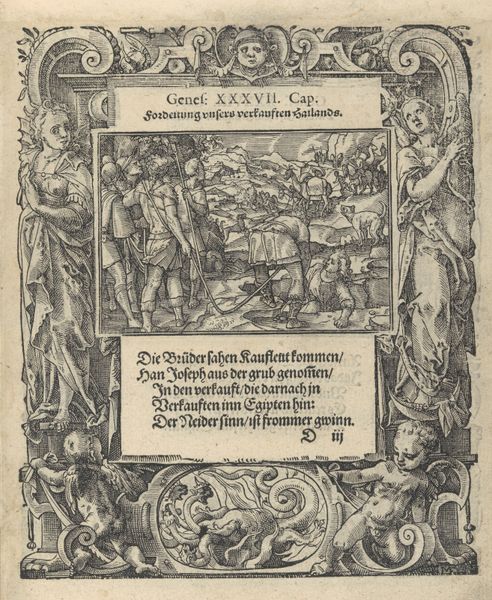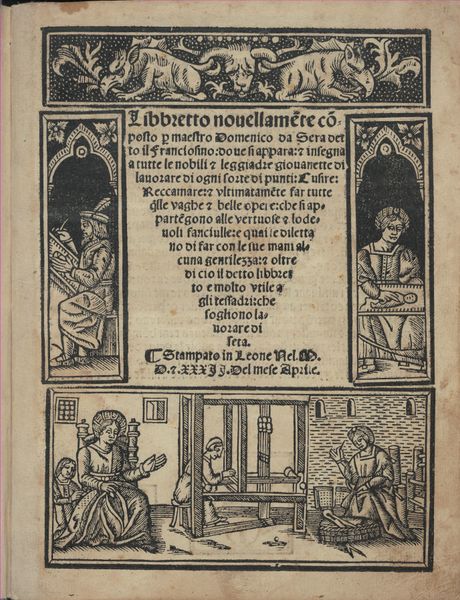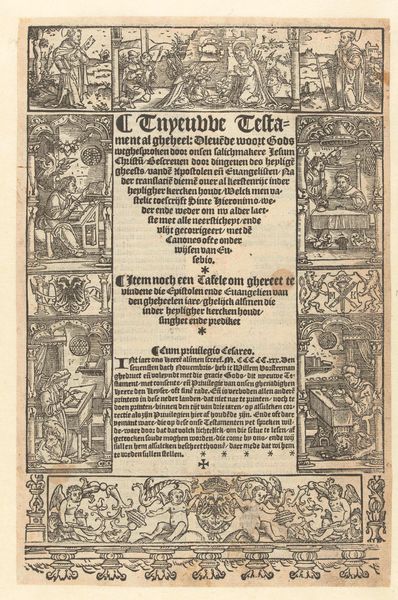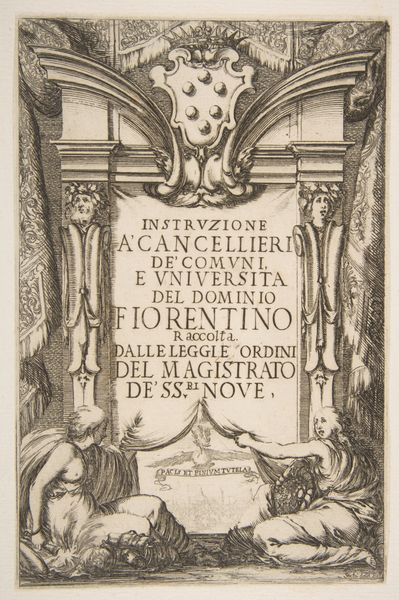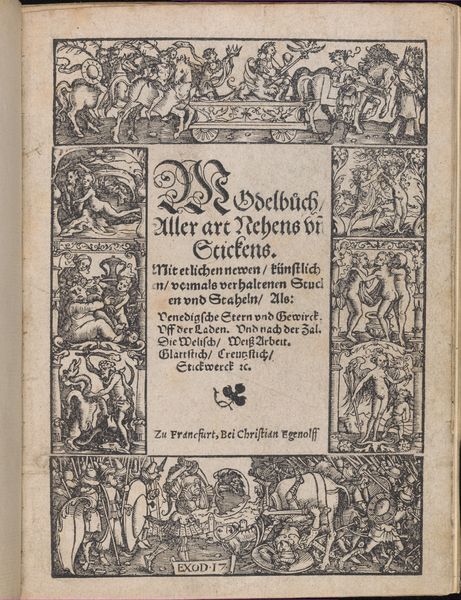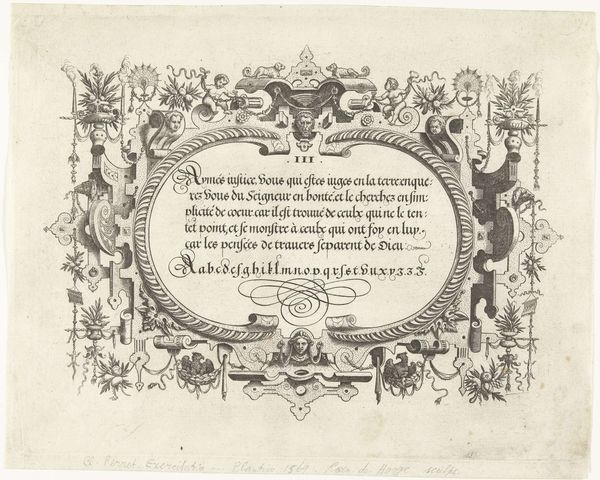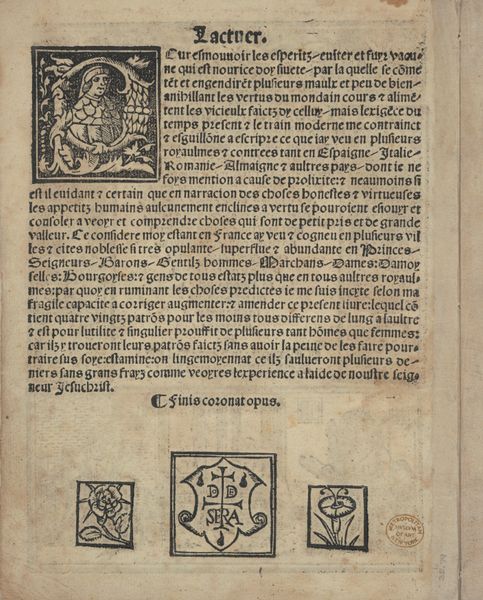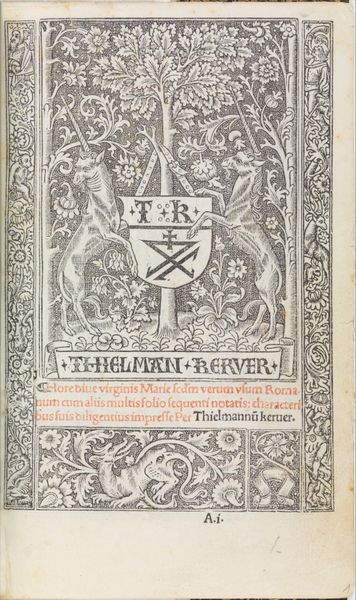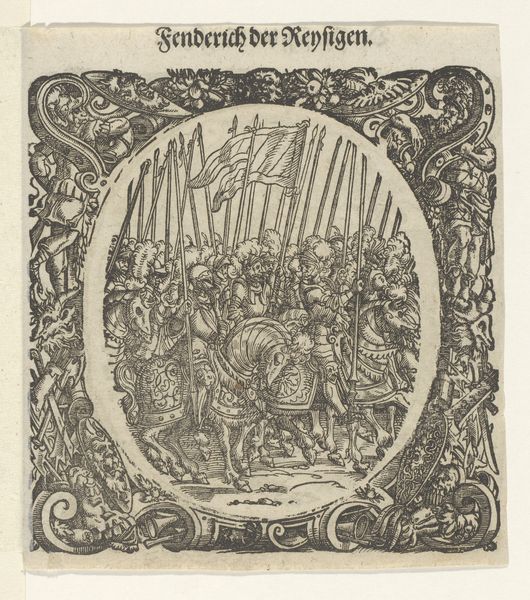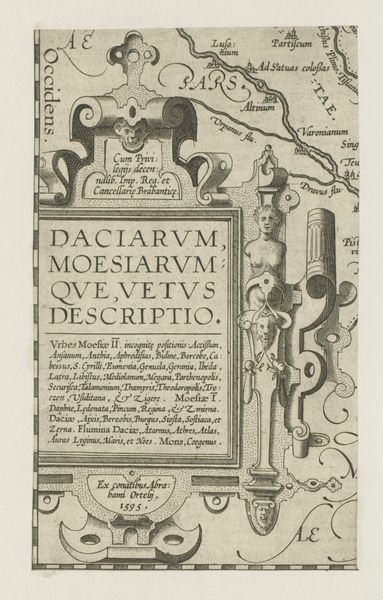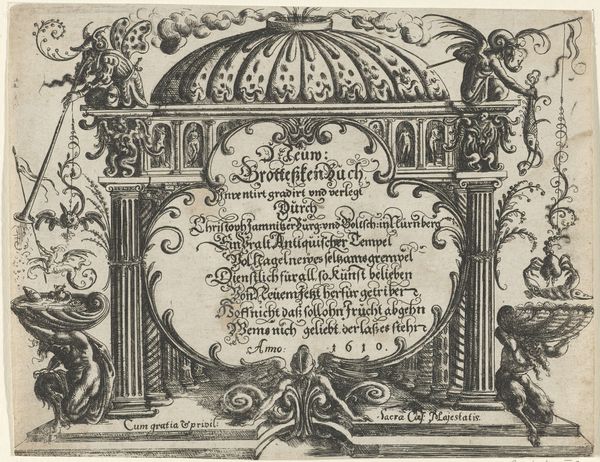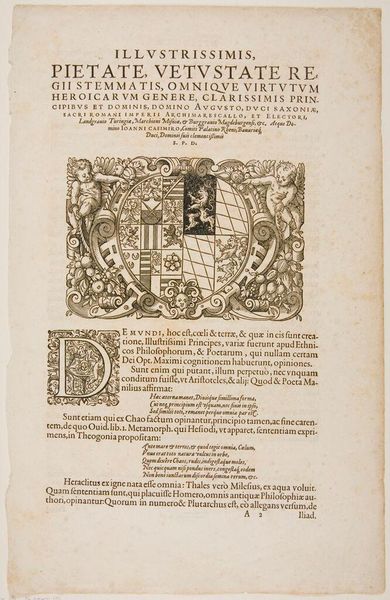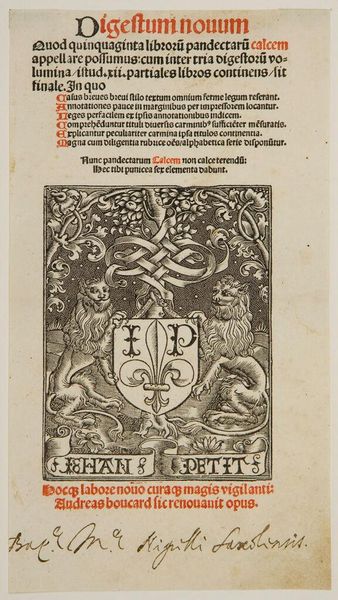
drawing, print, ink, woodcut
#
drawing
#
pen drawing
# print
#
figuration
#
ink
#
pen-ink sketch
#
woodcut
#
northern-renaissance
Dimensions: Block: 9 5/8 × 7 3/16 in. (24.5 × 18.2 cm) Sheet: 11 9/16 × 7 11/16 in. (29.3 × 19.6 cm)
Copyright: Public Domain
Curator: Here we have a striking woodcut, “Title Border with Five Genii and a Monkey,” created around 1510 by Hans Baldung. It’s part of the collection at the Metropolitan Museum of Art. Editor: It strikes me immediately as an emblem of playfulness tinged with darker undertones; the sinuous lines create a feeling of restrained energy, doesn't it? Curator: Absolutely. Note how Baldung utilizes the woodcut medium to produce sharp contrast, a signature of Northern Renaissance printmaking. The composition, filled with meticulously rendered foliage, frames a space for text. Let’s consider the genii or putti intertwined within the branches—the figures at the top look like they are enacting an aggressive hunt. Editor: Yes, those putti offer a glimpse into Renaissance attitudes towards childhood and labor. Were these scenes intended as mere decorative whimsy, or is Baldung reflecting on the exploitation of labor even by innocents? I also notice the subtle presence of the monkey. What symbolic baggage is being imported from popular natural philosophy and physiognomy here? Curator: Excellent question. We know that Baldung, who also worked under Durer, had a real understanding of integrating classical motifs and allegorical symbolism into his work. See how the line moves our eye from the hunt, the fruit and animals, to a space that declares in Latin, Inuentozin coum que in tribus primis parti bus operu Joanis Gerfonis continē tur ſedulo ſtu dio concin natum—this work holds inventions from an artist. Editor: Inventions from artists but also from printers; such partnerships helped fuel cultural transformations across Europe. If we begin to think of the printing press, then we must consider how mass reproducibility affected class, gender, and racial relationships across socio-political stratifications. I notice there's an escutcheon in the lower section—it, too, hints at hierarchies and patronage. Curator: Precisely. In its time, this print acted as an advertisement or introduction to textual material. Baldung has very carefully chosen the natural forms and actions of his genii to attract a buyer, which has since served him as a lasting testament to fine art. Editor: It allows us a rich entry point to think about labor, exploitation, play, class, power, and, more broadly, material production!
Comments
No comments
Be the first to comment and join the conversation on the ultimate creative platform.
